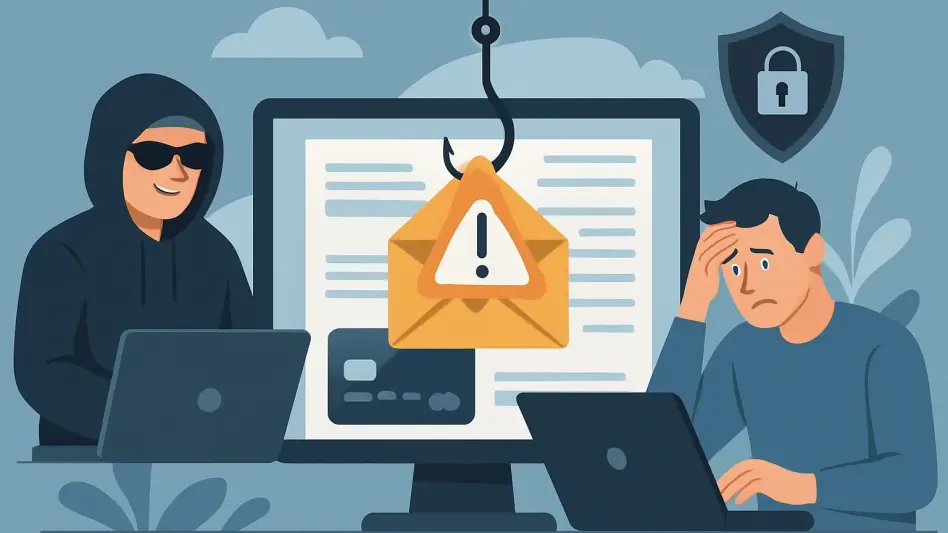Imagine a trusted tool, used by millions of developers worldwide, being turned into a weapon for cybercriminals. This is the reality with the npm registry and unpkg.com CDN, which have been exploited in a sophisticated phishing campaign targeting over 100 companies across industries like manufacturing and technology. With malicious scripts disguised as legitimate packages, attackers have found a way to bypass traditional security measures, raising urgent questions about the safety of open-source ecosystems. This roundup dives into diverse perspectives from industry experts, security researchers, and platform providers to unpack how hackers are exploiting these platforms, the impact of such attacks, and actionable strategies to stay protected.
Understanding the npm Phishing Landscape: Diverse Perspectives
A growing consensus among cybersecurity professionals points to the alarming misuse of npm and unpkg.com as a delivery mechanism for phishing attacks. Many highlight the creativity of attackers who craft personalized npm packages with malicious JavaScript scripts, hosted via unpkg.com, to target specific individuals through email campaigns. This method, blending legitimate services with deceptive intent, has caught the attention of security communities for its ability to evade conventional detection tools.
Differing views emerge on the root cause of this vulnerability. Some industry voices argue that the open nature of npm, designed for accessibility and collaboration, inherently invites abuse if not paired with stringent controls. Others emphasize the role of unpkg.com as a convenient CDN that, while beneficial for developers, lacks robust mechanisms to prevent malicious content distribution. These contrasting opinions underline a shared concern: trusted platforms are becoming double-edged swords in the hands of cybercriminals.
The scale of this campaign, affecting a wide range of businesses, has sparked debates on accountability. A segment of experts suggests that platform providers must take primary responsibility by enhancing authentication and monitoring systems. Meanwhile, another perspective stresses that organizations using these tools should adopt proactive defenses, recognizing that complete reliance on platform security may no longer suffice in today’s threat landscape.
Tactics Behind the Attacks: Expert Analysis
Personalized Deception Through npm Packages
Insights from security analysts reveal a chilling level of sophistication in how attackers tailor npm packages for individual targets. These packages, often embedded with malicious scripts, are designed to blend seamlessly into routine email correspondence, tricking recipients into engaging with phishing content. The personalization factor, such as including partial email autofill on fake login pages, adds a layer of credibility that many find difficult to spot.
Another angle of analysis focuses on the sheer volume of deceptive content involved. Reports indicate the creation of hundreds of malicious packages and over 600 HTML files mimicking business documents like invoices or project updates. This mass production, paired with targeted delivery, showcases a blend of precision and scale that traditional security filters struggle to counter, according to several industry observers.
A third viewpoint examines the psychological tactics at play. Cybersecurity professionals note that attackers exploit human trust in familiar platforms and file formats, making HTML attachments a particularly effective vector. This manipulation of trust, combined with technical subterfuge, creates a formidable challenge for both users and security systems aiming to identify malicious intent before harm occurs.
Unpkg.com as a Tool for Malicious Distribution
Security researchers have voiced concern over the exploitation of unpkg.com as a conduit for delivering redirect scripts via HTML attachments. Disguised as mundane business communications, these attachments load scripts from the CDN that guide unsuspecting victims to phishing sites. The reliance on a legitimate service for such illicit purposes complicates detection, as many organizations whitelist trusted domains like unpkg.com.
A contrasting opinion highlights specific examples of deceptive precision, such as scripts that pre-populate login fields with fragments of a victim’s email address to build trust. This tactic, noted by multiple sources, demonstrates an acute understanding of user behavior, making the phishing pages appear authentic at first glance. Such attention to detail has amplified calls for better scrutiny of CDN-hosted content.
Yet another perspective focuses on the broader implications of CDN misuse. While unpkg.com offers undeniable convenience for developers accessing public npm packages, several experts argue that this accessibility comes at a cost. The potential for abuse by malicious actors necessitates a reevaluation of how CDNs balance ease of use with safeguards against exploitation, a debate that continues to gain traction.
Automation Driving Attack Scalability
A recurring theme among cybersecurity discussions is the role of automation in amplifying phishing campaigns. Attackers reportedly use Python-based systems and templates to rapidly generate and publish malicious npm packages, enabling them to target diverse industries with minimal effort. This scalability, many agree, transforms what might have been isolated incidents into widespread threats.
Some analyses delve into the mechanics of this automation, noting the use of consistent naming patterns and template files to streamline package creation. This systematic approach, as observed by various security teams, allows attackers to adapt quickly to new targets, raising alarms about the potential for even larger campaigns over the next few years, possibly extending from 2025 to 2027.
A differing stance challenges the notion that open-source platforms are secure by default. Several industry commentators argue that the ease of automating malicious content distribution exposes critical flaws in current systems. This perspective pushes for innovative detection methods to disrupt automated attack chains, urging a shift in how platform vulnerabilities are addressed at a foundational level.
Industry Reactions and Security Evolutions
Collaboration between security researchers and platform providers has been a focal point of discussion following this campaign. Many commend the swift response in removing most offending packages, viewing it as a testament to the value of coordinated efforts. The alignment with recent moves by major platforms to strengthen npm publishing policies also garners positive feedback as a step toward mitigating future risks.
However, opinions vary on the adequacy of current measures. Some cybersecurity experts draw parallels to past supply chain attacks on npm, suggesting that while progress has been made, authentication and publishing controls still fall short of countering inventive attack methods. This critique fuels a push for more dynamic and predictive security frameworks to stay ahead of evolving threats.
Speculation on future directions also surfaces, with a segment of the industry questioning whether existing strategies can match the pace of cybercriminal innovation. Proposals for enhanced monitoring, stricter access protocols, and real-time threat intelligence sharing are frequently cited as potential solutions. These ideas reflect a collective drive to fortify open-source ecosystems against increasingly complex phishing tactics.
Protective Strategies: Tips from the Field
Drawing from a variety of security recommendations, one key takeaway is the need to quarantine HTML attachments, which serve as a common entry point for phishing attacks. Experts across the board advocate for treating such files with caution, especially those linked to unpkg.com, to prevent initial engagement with malicious content.
Another widely endorsed tip involves monitoring network requests for suspicious activity tied to CDNs like unpkg.com. Setting up endpoint detection rules to flag HTML files with minimal content or unusual script references in download folders is suggested as a practical safeguard. This proactive approach aims to catch threats at an early stage, minimizing potential damage.
Additionally, analyzing browser history for navigation patterns that indicate phishing interactions is gaining traction as a defense mechanism. Many in the field recommend looking for transitions from local HTML files to external domains embedding email fragments in URLs. Equipping teams with clear guidelines to spot these red flags can significantly bolster an organization’s resilience against tailored attacks.
Reflecting on the npm Phishing Challenge: Next Steps
Looking back, the collaborative efforts to address the npm phishing campaign marked a pivotal moment in recognizing the vulnerabilities of trusted platforms. The insights gathered from diverse industry voices painted a picture of both ingenuity on the part of attackers and determination among defenders to counteract such threats. The discussions underscored how automation and personalization had elevated the stakes for businesses worldwide.
Moving forward, organizations were encouraged to prioritize robust monitoring and filtering practices to shield against similar exploits. Strengthening partnerships with security communities and platform providers emerged as a critical next step to enhance collective defenses. By investing in adaptive strategies and staying vigilant, companies could better navigate the evolving landscape of cyber threats, ensuring that trust in open-source tools remained intact for the long haul.








